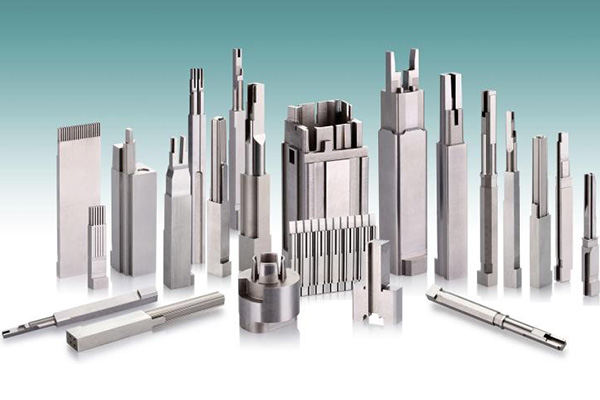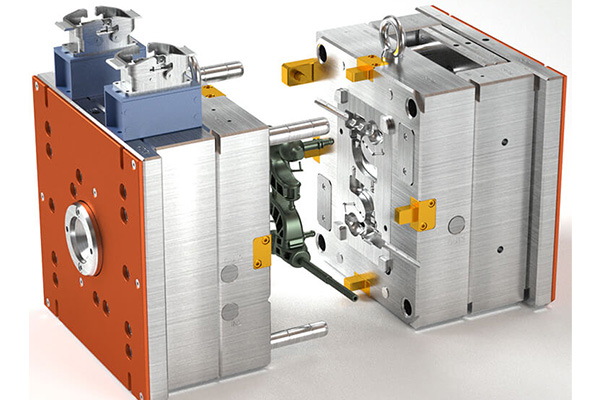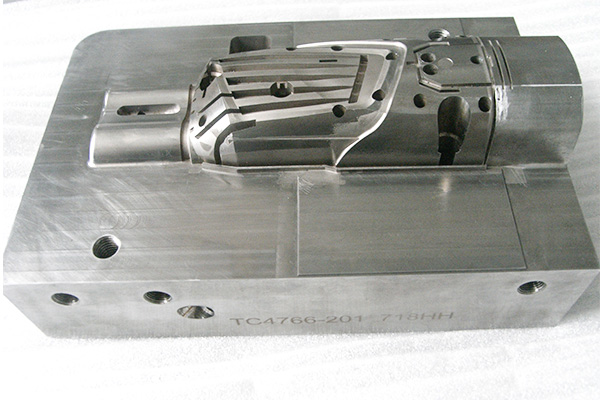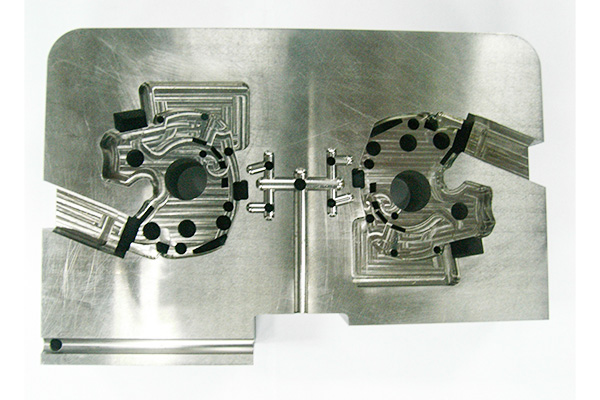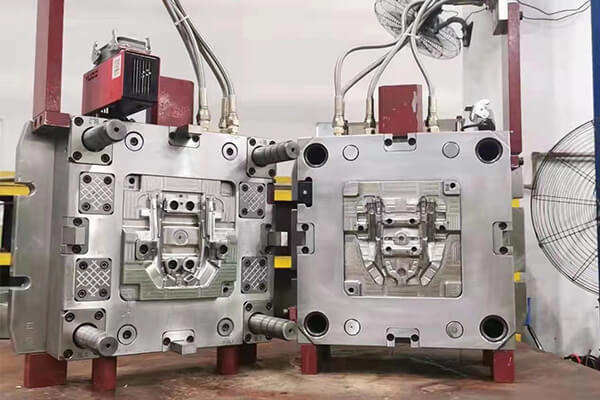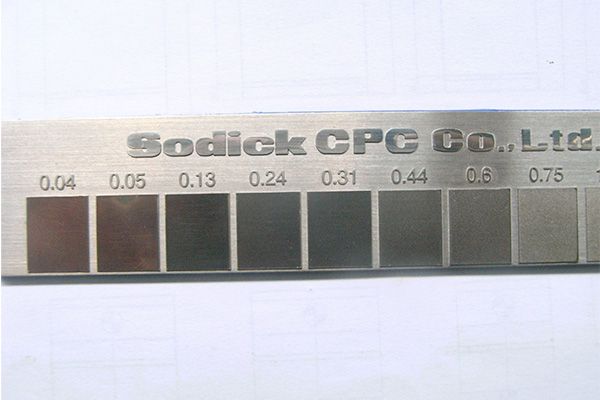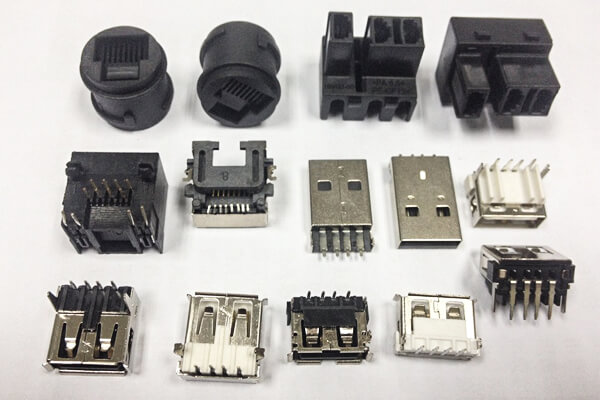Parts of Injection Mold: Composition and Fabrication
The design process of injection molds is complex due to their critical functions and extreme operating conditions.
During the design and manufacturing process, engineers must consider a large number of different plastic injection mold parts. In this article, we will focus on introducing the composition of injection mold components, and discuss their comprehensive knowledge of material selection, processing technology, precision, surface treatment and so on.
Composition of Parts of Injection Mold
The injection mold is the core of the injection molding process and an important tool for the production of modern plastic products. It is composed of multiple precision parts. Each component plays a key role in the injection molding process, contributing to the precision, quality, and efficiency of the final product. As technology advances and manufacturing needs evolve, understanding these complex components becomes increasingly important to achieving successful injection molding results.The following will introduce the parts of injection mold in detail:
Cavity Plate and Core Plate
The cavity plate forms the exterior of the part, while the core plate shapes its interior. These plates collaborate to create the desired part shape and features.
Runner System and Gating Components
The runner system is a network of channels that guide the molten plastic from the injection unit to the cavities. Gating components control the entry point of the plastic into the mold.
Cooling System and Cooling Channels
Proper temperature regulation is crucial for successful molding. Cooling channels integrated into the mold help dissipate heat efficiently, ensuring consistent part quality.
Ejection System and Ejector Mechanisms
Ejector pins and plates facilitate the removal of the molded part from the mold after solidification. These mechanisms must be carefully designed to avoid damaging the part during ejection.
Alignment and Locking Mechanism
Guide pins, bushings, and mold clamps ensure precise alignment and secure closure of the mold. Maintaining alignment is vital for achieving consistent part dimensions.
Venting System
Venting channels allow air and gases to escape as molten plastic fills the cavities. Effective venting prevents air traps and ensures complete mold filling.
Slides, Lifters, and Undercuts
These components enable the creation of complex part features, such as undercuts or side actions, that cannot be achieved through simple mold opening.
Inserts and Overmolding Components
Injection molds can incorporate pre-fabricated components, such as metal inserts, and facilitate overmolding, where multiple materials are combined in a single mold.
Mold Inserts and Interchangeability
Mold inserts provide design flexibility, allowing specific areas of the mold to be changed or replaced to accommodate variations in parts or materials.
Ejector Return Mechanism and Mold Resetting
Springs and mechanisms ensure that ejector components return to their initial positions after ejection, preparing the mold for the next injection cycle.

Common Mold Parts Materials and Properties
Common mold parts are made from a variety of materials chosen for their specific properties and suitability for injection molding applications. Here are some commonly used mold part materials along with their properties:
- Tool Steel:
Properties: It has high hardness, wear resistance and impact resistance, and is suitable for the manufacture of parts of injection mold that require high durability.
Application: Commonly used in wear-resistant parts such as mold cavity, mandrel, slider, etc. - Stainless Steel:
Properties: Corrosion resistance, suitable for mold parts that are in contact with food, chemicals, etc.
Application: Used in the manufacture of mold cavities, mold cores and other parts with special environmental requirements. - Aluminum Alloy:
Properties: Lightweight, good thermal conductivity, suitable for parts of injection mold that require faster cooling.
Application: Used to manufacture heat sinks, cooling channels and other parts that need to regulate temperature. - Copper Alloy:
Properties: Good thermal conductivity, suitable for mold parts that require high thermal conductivity.
Application: Manufacture of electronic parts, electrodes, etc. - Nitrided Steel:
Properties: It has high hardness and wear resistance, and is suitable for parts of injection mold that require high strength and wear resistance.
Application: Manufacture of wear-resistant parts such as sliders and lifters. - Carbide (Hard Alloy):
Properties: extremely high hardness and wear resistance, suitable for making wear-resistant and high-strength parts.
Application: Manufacture of mold tools, cutting parts, etc. - Engineering Plastics:
Properties: Wear-resistant, chemical-resistant, can be used to make some plastic parts of injection mold.
Applications: Manufacture of mold handles, manually operated parts, etc.
It’s important to choose the right material for each specific injection mold part based on factors like part complexity, molding conditions, required surface finish, and budget constraints. Proper material selection ensures that the mold parts can withstand the injection molding process, maintain dimensional stability, and provide long-lasting performance.
Processing Technology of Injection Mold Parts
Processing techniques for injection mold components involve a series of manufacturing steps to create the individual components that make up the mold assembly. These steps ensure that the parts are accurately shaped, have proper surface finish, and meet the required specifications. Here are the key stages of processing for parts of injection mold:
- Design and CAD Modeling:
The process begins with designing the parts of injection mold using computer-aided design (CAD) software. The 3D models include all dimensions, features, and specifications. - Material Selection:
Choose the appropriate material based on the properties required for each specific mold part. Consider factors like hardness, wear resistance, corrosion resistance, and thermal conductivity. - Material Preparation:
For metals, materials are prepared through processes like melting, alloying, and casting or forging to create raw material forms suitable for machining. For plastics, the material is typically in the form of pellets. - CNC Machining:
Use various machining processes such as milling, turning, drilling, and grinding to remove excess material and create the desired shapes and features. Computer numerical control (CNC) machines ensure precision. - Heat Treatment:
Some materials require heat treatment processes like annealing, quenching, and tempering to achieve specific hardness and mechanical properties. - Surface Treatment:
Apply surface treatments such as polishing, coating, plating, and nitriding to improve surface finish, hardness, wear resistance, and corrosion resistance. - Electrical Discharge Machining(EDM):
EDM is used to create intricate shapes and features that are difficult to machine with conventional methods. It involves controlled electrical discharges to erode the material. - Assembly and Finishing:
Assemble the individual parts of injection mold together according to the design specifications. This may involve bolting, welding, or other joining techniques. Final adjustments are made to ensure proper fit. - Inspection and Quality Control:
Thoroughly inspect each mold part to ensure they meet the required specifications and tolerances. Any deviations are corrected before moving to the next step. - Testing and Validation:
Test the parts of injection mold in a controlled environment to ensure they function as intended. This may include testing for proper fit, alignment, and movement. - Packaging and Delivery:
Once all quality checks are complete, the finished parts of injection mold are packaged securely and delivered to the assembly site for mold fabrication.
The processing of plastic injection mold parts demands precision and attention to detail to ensure the final components meet the strict requirements of the injection molding process. Each stage contributes to the overall quality and performance of the mold assembly.
Precision of Parts of Injection Mold
The precision of parts of injection mold is a critical aspect of the manufacturing process, as it directly impacts the quality, functionality, and consistency of the molded products. Precision refers to the degree of accuracy and repeatability in the dimensions, features, and tolerances of the mold parts. Here are factors that influence the precision of parts of injection mold:
- Dimensional Precision:
The dimensions of the components must exactly match the design requirements. Excessive dimensional deviations may result in poorly assembled or unusable parts. - Parallelism and Perpendicularity:
Parallelism and perpendicularity of the part are required to ensure that the mold is properly aligned when closed to avoid tilting or skewing of the part. - Surface Quality:
The surface of parts of injection mold should have a certain finish and smoothness to ensure the appearance and feel of the final product. - Matching Precision between Accessories:
The matching precision between different accessories ensures the stability and accuracy of the mold. For example, precise alignment of cavity and mandrel. - Cooling Channel Precision:
The precision of the cooling channel affects the uniform distribution of the mold temperature, which in turn affects the quality of the molding and the cycle time. - Assembly Precision:
Precise alignment of fittings during assembly ensures proper functioning and closing of the mold. - Movement Accuracy of Sliders and Elevators:
If there are parts such as slides or lifters in the mold, their motion trajectories must be precise to ensure that complex shaped parts are formed correctly. - Precision of the Exhaust Channel:
The precision of the exhaust channel ensures that the mold can effectively remove air and gas during the injection process. - Assembly Fit Precision:
The assembly and matching accuracy of each part of the mold affects the overall stability and performance, avoiding problems caused by looseness between parts.
Precise mold fittings ensure the stability, consistency and reliability of injection molds in the production process, thereby ensuring the quality and conformity of the final product.
Application of Injection Molds with Different Precision
Injection molds are widely used in various industries for manufacturing plastic and metal parts with different levels of precision. The precision of an injection mold refers to its ability to produce parts that meet specific dimensional, structural, and surface finish requirements.The selection of precision level for an injection mold depends on factors such as the intended application, part complexity, material properties, cost considerations, and required tolerances.
Higher precision molds typically require more advanced manufacturing techniques, tighter quality control, and specialized materials, which can increase production costs. Conversely, low precision molds are more cost-effective for producing simpler parts where tight tolerances are not critical.
Regardless of the precision level, injection molding technology plays a crucial role in modern manufacturing across a wide range of industries, contributing to the production of diverse products with varying levels of complexity and precision.
High Precision Applications
- Medical Devices: Injection molds with high precision are crucial for manufacturing medical devices such as surgical instruments, implantable components, and diagnostic equipment. These parts require tight tolerances and consistent quality to ensure patient safety and proper functioning.
- Electronics: Precision injection molds are used to create intricate components for electronic devices, including connectors, switches, and miniature parts for smartphones, tablets, and other gadgets.
- Aerospace and Defense: Critical components in aerospace and defense industries, like sensor housings, connectors, and structural elements, demand high precision to ensure reliability and safety.
- Automotive: Precision injection molds are utilized to produce intricate automotive parts like sensors, connectors, and interior components, ensuring consistent quality and fit.
Example: Medical Syringe Parts: Dimensional tolerances are typically within +/- 0.02 mm to ensure dosing accuracy.
Optical lenses: Dimensional tolerances within +/- 0.005 mm are required to ensure optical performance.
Medium Precision Applications
- Consumer Goods: Injection molds with medium precision are suitable for producing a wide range of consumer goods like household appliances, toys, and tools.
- Packaging: Plastic packaging components such as caps, closures, and containers require medium precision to ensure proper sealing and functionality.
- Industrial Equipment: Many industrial tools and equipment parts can be produced using medium precision molds, including gears, handles, and housings.
- Furniture: Injection molds are used to manufacture various plastic components for furniture, such as chair backs, armrests, and decorative elements.
Example: Automotive interior parts: Dimensional tolerances are typically within +/- 0.1 mm to meet assembly requirements.
Household Plastic Accessories: Dimensional tolerances are required within +/- 0.2 mm to ensure fit and use.
Low Precision Applications
- General Utilities: Low precision injection molds are commonly used for producing everyday items like disposable cutlery, containers, and simple household items.
- Construction: Certain construction components, such as brackets and non-structural elements, can be manufactured using low precision molds.
- Automotive: Some non-critical automotive parts, like interior trim pieces, can be produced using low precision molds.
Example: Plastic Toys: Dimensional tolerances are typically within +/- 0.5mm, some dimensional variance is allowed.
Disposable plastic cutlery: Requires a dimensional tolerance within +/- 1 mm, as long as basic functions are met.
Surface Treatment and Function of Parts of Injection Mold
Surface treatment and the functions of parts of injection mold are crucial aspects of the injection molding process that directly impact the quality and functionality of the final molded products. The following is a detailed introduction to the surface treatment methods and functions of various parts of injection mold.
Textures and Finishes
The surface finish of injection molded parts can be modified using a variety of textures and finishes such as matte, glossy, textured or patterned. These textures not only enhance aesthetics, but also serve functional purposes, such as improving grip, reducing glare, or mimicking natural materials.
Polishing
Polishing are used to achieve a smooth and reflective surface, which is important for parts that require a high-quality appearance, such as transparent parts, automotive trim, and consumer electronics. Polishing helps to improve the surface smoothness of mold parts, reduce surface roughness, improve product appearance and reduce frictional resistance.
Coatings
Coatings can be applied to mold surfaces to improve release, reduce wear and prevent material sticking. These coatings are especially useful for materials that tend to stick to the mold, such as rubber or silicone. Coatings help improve the anti-stick, wear and corrosion resistance of mold parts.
Chemical Etching
Chemical etching can be used to create textures or patterns on the surface of the mold, resulting in a corresponding texture on the molded part. This technique is often used for decorative or functional purposes, such as enhancing grip on handles or buttons.
Nitriding and Hardening
Heat treatment processes such as nitriding and hardening can improve the durability and wear resistance of the mold surface, thereby extending the life of the mold and reducing maintenance needs.
How to Replace Parts of Injection Mold
Replacing parts of injection mold involves a systematic process to ensure that molds remain in working order and production can continue without major interruptions. The following are general guidelines on how to replace parts of injection mold:
- Check Status:
Perform a complete inspection of the mold to determine which parts need to be replaced. This can be done through visual inspection, measurement and testing. - Part Preparation:
Prepare corresponding new parts according to the parts of injection mold that need to be replaced. This may require purchasing or manufacturing new parts in advance. - Mold Removal:
Molds are removed from the production line to allow replacement of parts. This may require unfixing and assembly of the mold. - Old Parts Removed:
Remove old parts that need to be replaced from the mold. This may involve dismantling other parts or components to gain access. - New Parts Installed:
Install new parts into molds, ensuring proper positioning and alignment. Tooling may be required for adjustment and securing. - Debug and Test:
After the installation is complete, reassemble the entire mold, and carry out commissioning and testing to ensure that the mold is functioning normally and that the replacement of parts will not cause other problems. - Assembly Complete:
The entire mold is assembled back into the production line, ready to go back into production. Ensure that the replacement of mold parts will not affect the quality and efficiency of production. - Production Test:
Before the official production, some trial production is carried out to ensure that the replacement of mold parts will not affect the consistency and quality of the product.
The replacement of parts of injection mold is an important step to maintain mold performance and prolong mold life. Regular inspection and replacement of worn or aging parts can avoid unplanned downtime and quality issues in production. During mold part replacement, it is necessary to ensure that the new part matches the original design in order to maintain the performance and precision of the mold.
The Importance of Mold Parts for Design Flexibility
Injection molded parts play a vital role in providing design flexibility during the injection molding process. The ability to modify and interchange mold components allows manufacturers to adapt to changing production requirements, create complex part designs and optimize manufacturing processes to meet different requirements and respond to changing market dynamics. This versatility enables manufacturers to remain competitive and agile in the face of changing customer demands and industry trends. These are the reasons why parts of injection molded are very important for design flexibility.
Adaptation to Changing Requirements
- As product designs evolve or market demands shift, having interchangeable parts of injection mold allows manufacturers to quickly adjust their molds to accommodate new design features, materials, or specifications.
- Parts of injection mold can be replaced or modified to produce different variations of a product, enabling manufacturers to respond swiftly to market trends and customer preferences.
Complex Part Geometry
- Some products require intricate and complex geometries that may not be achievable with a single mold configuration.
- Parts of injection mold such as inserts, slides, and lifters enable the creation of undercuts, threads, and other intricate features that would be challenging to achieve with a basic mold design.
Multi-Material and Overmolding
- Certain products benefit from combining multiple materials or colors in a single part, which is facilitated by molds with interchangeable parts designed for multi-material or overmolding processes.
- Interchangeable parts of injection mold allow manufacturers to introduce new materials, textures, or colors to specific areas of a part without redesigning the entire mold.
Quick Changeovers
- Production efficiency is improved with interchangeable parts of injection mold. Changeovers between different product runs or variations can be done more rapidly, minimizing downtime and maximizing production output.
Tool Maintenance and Repair
- Parts of injection mold can be replaced individually in case of wear, damage, or maintenance needs, reducing the downtime associated with repairing or servicing the entire mold.
Flexible Production Strategy
- The use of parts of injection mold can flexibly adjust the production strategy according to demand, from small batches to large batches, in order to adapt to market changes and demand fluctuations.
Influence of Injection Mold Parts on Mold Life
The design and quality of parts of injection mold can have a significant impact on the overall life and performance of the mold. Injection molding is a manufacturing process used to produce plastic parts in high volume, and the mold itself plays a vital role in the process. The following are the effects of parts of injection mold on mold life:
- Material Selection: It is critical to choose suitable materials for the parts of injection mold. Mold components are often subjected to high temperatures, pressure, and repeated mechanical stress during the injection molding process. Using high-quality, heat-resistant materials such as tool steels, stainless steels, and alloys can extend the mold’s lifespan by reducing wear and resisting deformation.
- Surface Finish: The surface finish of mold parts can affect the mold’s performance and longevity. A smooth surface finish reduces friction and wear between moving parts, minimizing the chances of premature failure. Proper surface treatments and coatings can also enhance the mold’s resistance to corrosion, abrasion, and other forms of deterioration.
- Parts Design: The design of parts of injection mold influences factors such as cooling efficiency, part ejection, and mold maintenance. Well-designed mold components ensure efficient heat dissipation, reducing the risk of thermal fatigue and distortion.
- Tolerances and Fit: Precise tolerances and proper fits between mold components are essential to prevent excessive friction, wear, and potential binding during operation. Poorly fitting parts can lead to increased wear, reduced part quality, and mold damage.
- Cooling System: The cooling system design within the mold affects the uniformity and speed of the cooling process. Proper cooling is vital to avoid thermal stresses that can degrade the mold over time. Inadequate cooling can lead to warping, cracking, and reduced mold life.
- Maintenance and Care: Regular maintenance and proper care of parts of injection mold are crucial for extending mold life. This includes cleaning, lubrication, and addressing any signs of wear or damage promptly.
- Injection Pressure and Speed: Operating the injection molding machine within recommended pressure and speed limits is essential to prevent overloading the mold. Excessive pressure and speed can cause stress, deformation, and accelerated wear on mold components.
- Processing Conditions: The injection molding process parameters, such as temperature, pressure, and cycle time, should be set within appropriate ranges. Proper processing conditions help minimize stress on parts of injection mold and extend their longevity.
In conclusion, the quality, design, and maintenance of parts of injection mold play a critical role in determining the mold’s overall lifespan and performance. A well-designed mold, composed of high-quality materials and components, operated within recommended processing conditions, and maintained regularly, will generally have a longer and more reliable service life.
Parts of Injection Mold Manufacturer – Sungplastic
Sung Plastic is an on-demand manufacturing company. We offer a wide range of plastic and metal materials and have complete precision machining and forming systems. We have an experienced engineering team and advanced production facilities to ensure that the needs of customers in terms of customization are met.
We have more than 20 years experience in mold making. We will comprehensively consider factors such as part design, material characteristics, precision requirements, mold life and cost, and tailor a suitable mold manufacturing plan for customers. Through optimized designs and strict quality control, we ensure efficient manufacturing processes and high-quality finished parts.
If you need custom high-quality and cost-effective molds, please contact us now to get an instant quotation. Our experience and quality will deepen our cooperation.
About Sungplastic
Sungplastic is a plastic product manufacturer with rich experience in injection molding. According to the different product development requirements, we flexibly adjust the manufacturing process to achieve high quality, high efficiency and more economical.
We offer a variety of manufacturing services: Rapid Prototyping, Tool Making, Injection Molding, Product Design and Development, CNC Machining and Metal Stamping. You can choose from a variety of plastics, silicone rubber, or metal for your product. Regardless of mass production or small batch customization, Sungplastic has always been committed to providing assured, efficient and more economical one-stop processing services for your projects.
Contact us for a free quote and project review.
Get a free quote and design analysis today.
We’ll reply you within 6 working hours. We respect your privacy.

